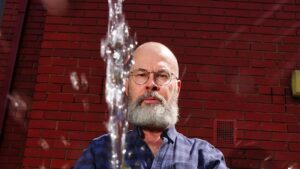
Researchers at the BESSY II facility have made significant strides in understanding high-temperature superconductivity by analyzing charge carrier pairs in the compound La2CuO4. Their study, published on November 7, 2025, in the journal Nature Communications, reveals crucial differences in interaction energies within the material’s copper oxide layers compared to the insulating lanthanum oxide layers. This discovery enhances the understanding of superconductivity, a phenomenon that has remained partially enigmatic despite its applications in technology.
High-temperature superconductors have captivated scientists since their discovery nearly four decades ago. These materials can conduct electricity without loss, not only at temperatures close to absolute zero (0 Kelvin or minus 273 degrees Celsius), but also at notably higher temperatures, though still below room temperature. Currently, the full mechanisms behind this extraordinary ability are not completely understood, with ongoing research focused on the interactions between charge carriers in these materials.
Leading the international research team, Professor Alexander Föhlisch of BESSY II, along with first author Dr. Danilo Kühn, conducted experiments to measure the energy of charge carrier pairs situated on oxygen atoms within undoped samples of La2CuO4. This compound consists of alternating layers of copper oxide and lanthanum oxide. When doped with foreign atoms, it can exhibit superconductivity below 40 Kelvin, with superconductivity occurring specifically in the CuO layers while the LaO layers maintain their insulating properties.
The team’s approach utilized advanced time-of-flight spectrometers configured for Auger photoelectron coincidence spectroscopy. By directing special X-ray pulses at the sample, the researchers were able to gather precise data on the interaction processes that occur at incredibly high speeds. “Our method allowed us to analyze these interactions precisely because we selectively observe the relevant copper oxide layer,” Dr. Kühn stated.
The results indicated that the interaction energies within the copper oxide layers, which are essential for superconductivity, were significantly lower than those found in the insulating lanthanum oxide layers. This finding not only sheds light on the behavior of charge carriers in high-temperature superconductors but also suggests potential implications for research into other functional materials.
Professor Föhlisch emphasized the significance of these measurements, stating, “These results help us to better understand the mechanisms of high-temperature superconductivity. This measurement technique can also provide insights into other functional materials.”
The work conducted by this international team marks a noteworthy advancement in the field of superconductivity. As researchers continue to explore the complexities of these materials, findings such as these may pave the way for future innovations in technology and materials science.







